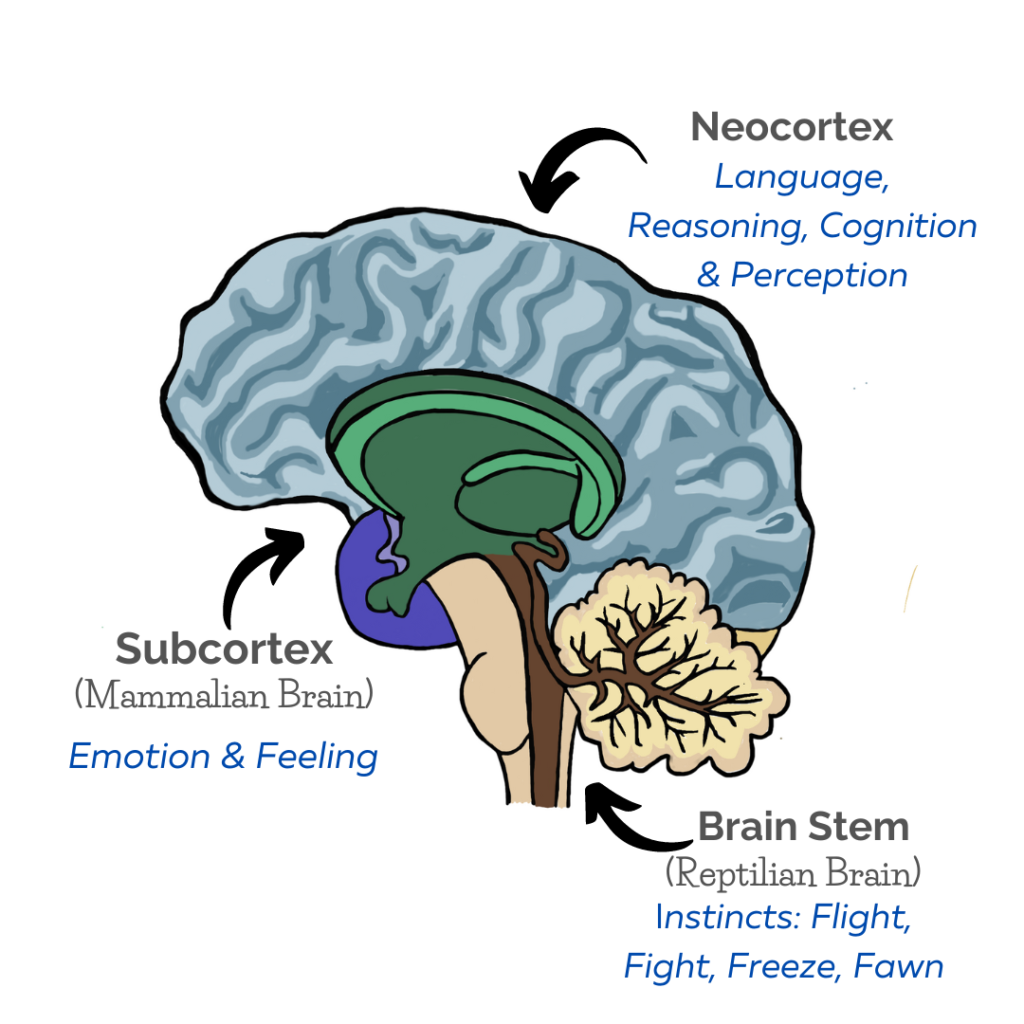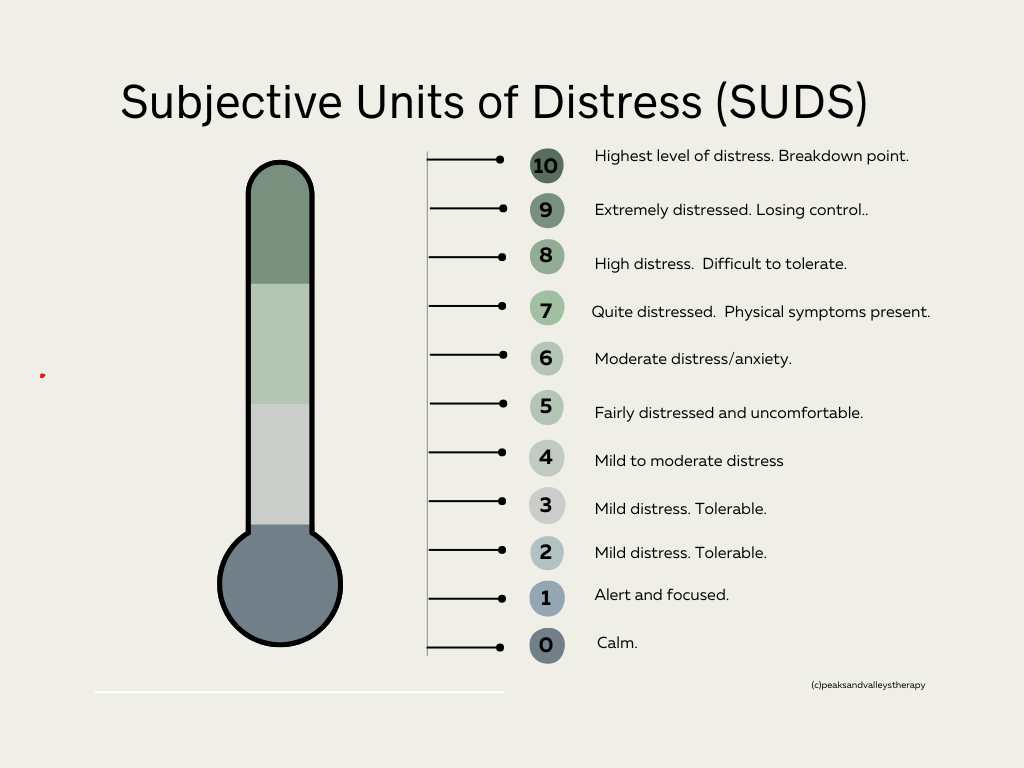What is Brainspotting?
Brainspotting is a brain-based therapeutic intervention that developed out of the use of eye movement desensitisation and reprocessing (EMDR). Dr. David Grand is the founder and developer of this intervention. For 25 years Dr. Grand worked with trauma survivors, including survivors of the 9/11 attacks and regularly implemented EMDR into his practice. Brainspotting was discovered in 2003 when Dr. Grand was working with an elite athlete who kept getting “stuck” in the EMDR process. Brainspotting evolved out of this work and was honed for over a decade before Dr. Grand began to train other practitioners internationally. Nearly 25 years later, Brainspotting is world renowned as an effective intervention for PTSD, trauma, chronic stress, anxiety, performance blocks, etc.

How Does Brainspotting Work?
It’s important to have a basic idea of how the brain stores trauma to understand how brainspotting works. Our brains have a brain stem, or reptilian brain, and the cerebral cortex, or the mammalian brain. These two areas together are known as the subcortex. We share this part of the brain with other animals.
The subcortex is intuitive, emotional and non-verbal. Do you ever get a “gut-feeling” or feel a sense of danger causing your body to break out in goosebumps? This is your subcortex, your intuitive brain, sending signals to your body to react or respond before you are able to verbalise the messaging. When traumas happen, often the messaging or emotion gets stuck inside the subcortex. The brain stores trauma memories there as a way of protecting the individual from the emotions resulting in recalling the memory. Eventually however, those suppressed memories can cause psychological problems including depression, anxiety, PTSD, sleep disorders, dissociation and more.
In Brainspotting, eye position is used to find where the trauma lives in the deeper subcortical brain. Once the eye position is identified, the therapist and client work together to isolate the brainspot. In doing so, the trauma is effectively processed in a safe environment with the support of the therapist, and thus, the emotions and behaviours associated with the trauma are diffused.

What Does a Brainspotting Session Look Like? What do I need to do?
- The therapist will start by having you acclimate to a calm environment. You may do a few breathing exercises or grounding activities.
- The clinician may offer you headphones which play biolateral music. This is music that plays different sounds at different times into each ear. This helps activate both hemispheres of the brain simultaneously.
- The clinician may then ask you to think about a specific traumatic incident.
- You will be asked to identify where you feel that issue in your body when you think of it. For instance many people feel a heaviness in their chest, a tingling in an extremity or a tremor or phantom pain somewhere in their body. Name what you feel, regardless of how insignificant you may think it is.
- You will be asked to rank your level of distress using a SUDS scale.
- With your therapist’s guidance, you will then find your brainspot. To do this the therapist will use a pointer device and have you track its movement with your eyes while also focusing on the physical distress in your body.
- Depending on the technique your therapist chooses, either you will identify when you feel most activated, this is called “inside window”, or your therapist will track your eye movements and stop where they notice physical responses, this is called “outside window”.
- When the activated spot is identified, the therapist will mark the spot of focus and you will continue to look there as you think about the traumatic event.
- After a period of focused time, the therapist may check in with you regarding your SUDS level and how the physical responses may be manifesting. It is likely that your SUDS level is reduced and your physical responses are either gone or evolved.
SUDS Scale

What can I expect from a Brainspotting Session?
It is likely that after you and your therapist have identified and focused on your brainspot that you will feel a flood of emotions. This is normal. Think of it as a release after being trapped for so long. You may also experience blocked memories. It means you are processing the trauma out of its hiding place in the subcortex. A brainspotting session can feel intense. It is likely that you will be tired afterwards. Your brain was working overtime in a short amount of time. Essentially, brainspotting can do in a few sessions what it may take years of talk therapy to accomplish, so you need to be prepared for the emotional impact of that.Make sure you are able to rest after your session and do some self-care.
During the focused processing, you may wish to verbalise everything you are experiencing. That is great, please do so! However, you may also wish to stay silent and just feel your way through the process. That is fine too. There is no right or wrong way. If you choose to stay silent, which is totally acceptable, please understand that your therapist may check in with you from time to time as a way of monitoring you and the process.
Can I stop the session if I am not comfortable?
Absolutely! You can stop the session at any time.
I have ADHD and struggle with focus. Is this an intervention that caters to neurodivergent people?
Yes. It is important to make sure you have a brainspotting practitioner that has a neurodiverse affirming practice. There are simple accommodations that can be made such as shortening focus sessions and taking unfocused breaks. It is important to communicate your needs to your brainspotting therapist prior to a brainspotting session.
How many Brainspotting sessions do I need?
This is dependent upon the intensity of the trauma, the age of the trauma and the brainspotting processing. However, people like brainspotting because it’s time effective and efficient and for many it can help them in a few sessions.
Helpful Resources
Brainspotting. (2017). https://brainspotting.com/ – Check out the helpful videos here.
Brainspotting Canada Association. https://www.brainspottingcanada.com/
References
Brainspotting. (2017). https://brainspotting.com/
Brainspotting Canada Association. https://www.brainspottingcanada.com/
Deva Pon Pushpam. I, Frank J.C. Brainspotting Therapy. A and V Pub Journal of Nursing and Medical Research. 2023; 2(3):91-2. doi: 10.52711/jnmr.2023.23
Grand D. (2013). Brainspotting: The Revolutionary New Therapy for Rapid and Effective Change. (Book).
Healing Tree. (2017). A conversation with Dr. David Grand about trauma therapy & the brain. . https://brainspotting.com/site/healing-tree-presents-a-conversation-with-dr-david-grand/
